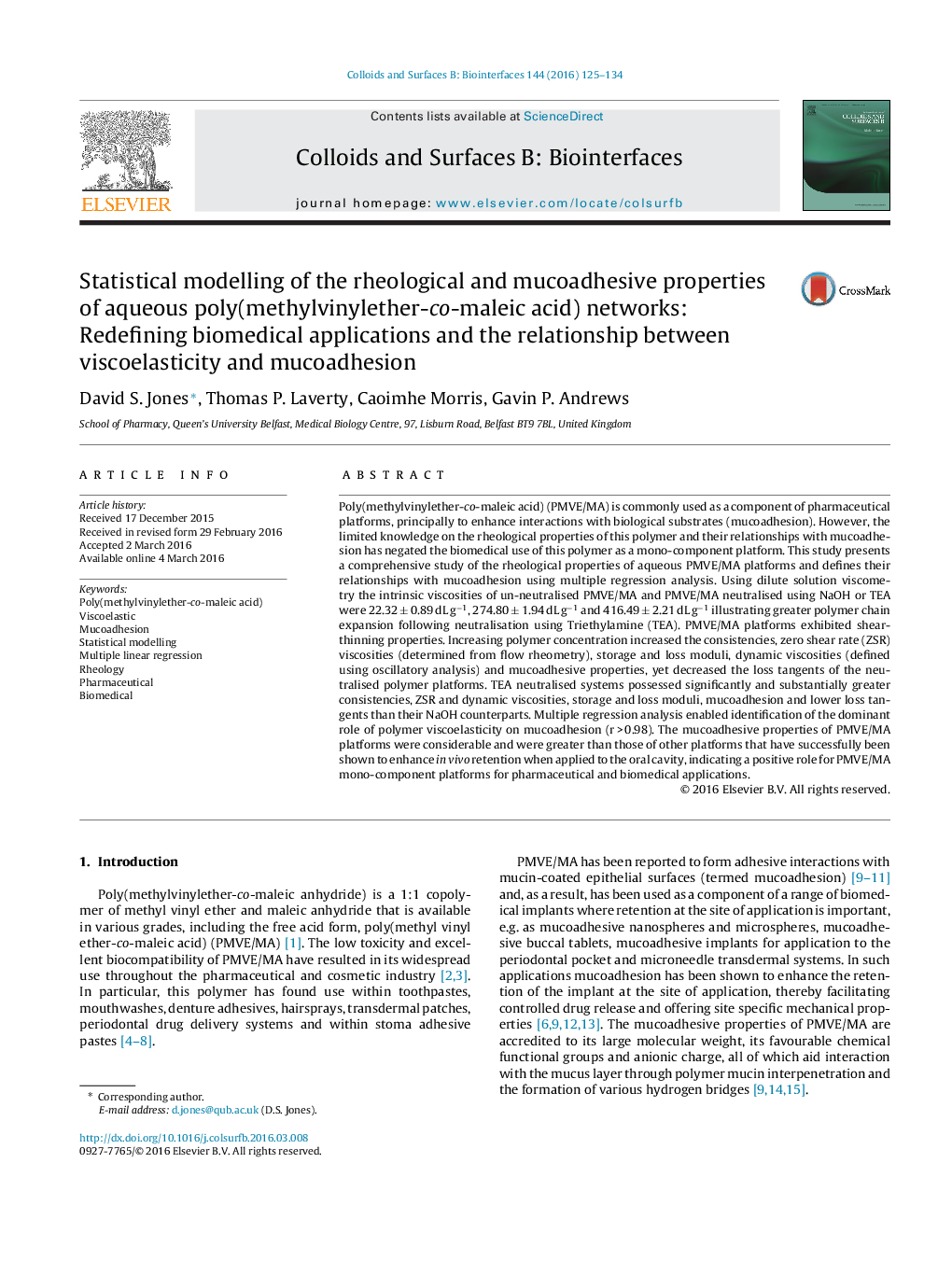| کد مقاله | کد نشریه | سال انتشار | مقاله انگلیسی | نسخه تمام متن |
|---|---|---|---|---|
| 598835 | 1454260 | 2016 | 10 صفحه PDF | دانلود رایگان |
• First comprehensive report of the rheological and mucoadhesive properties of PMVE/MA systems.
• Statistical modelling confirmed the relationship between mucoadhesion and viscoelasticity.
• Increasing PMVE/MA elasticity statistically increased mucoadhesion.
• PMVE/MA properties confirmed to be potentially suitable for use as biomedical implants.
Poly(methylvinylether-co-maleic acid) (PMVE/MA) is commonly used as a component of pharmaceutical platforms, principally to enhance interactions with biological substrates (mucoadhesion). However, the limited knowledge on the rheological properties of this polymer and their relationships with mucoadhesion has negated the biomedical use of this polymer as a mono-component platform. This study presents a comprehensive study of the rheological properties of aqueous PMVE/MA platforms and defines their relationships with mucoadhesion using multiple regression analysis. Using dilute solution viscometry the intrinsic viscosities of un-neutralised PMVE/MA and PMVE/MA neutralised using NaOH or TEA were 22.32 ± 0.89 dL g−1, 274.80 ± 1.94 dL g−1 and 416.49 ± 2.21 dL g−1 illustrating greater polymer chain expansion following neutralisation using Triethylamine (TEA). PMVE/MA platforms exhibited shear-thinning properties. Increasing polymer concentration increased the consistencies, zero shear rate (ZSR) viscosities (determined from flow rheometry), storage and loss moduli, dynamic viscosities (defined using oscillatory analysis) and mucoadhesive properties, yet decreased the loss tangents of the neutralised polymer platforms. TEA neutralised systems possessed significantly and substantially greater consistencies, ZSR and dynamic viscosities, storage and loss moduli, mucoadhesion and lower loss tangents than their NaOH counterparts. Multiple regression analysis enabled identification of the dominant role of polymer viscoelasticity on mucoadhesion (r > 0.98). The mucoadhesive properties of PMVE/MA platforms were considerable and were greater than those of other platforms that have successfully been shown to enhance in vivo retention when applied to the oral cavity, indicating a positive role for PMVE/MA mono-component platforms for pharmaceutical and biomedical applications.
Figure optionsDownload as PowerPoint slide
Journal: Colloids and Surfaces B: Biointerfaces - Volume 144, 1 August 2016, Pages 125–134
